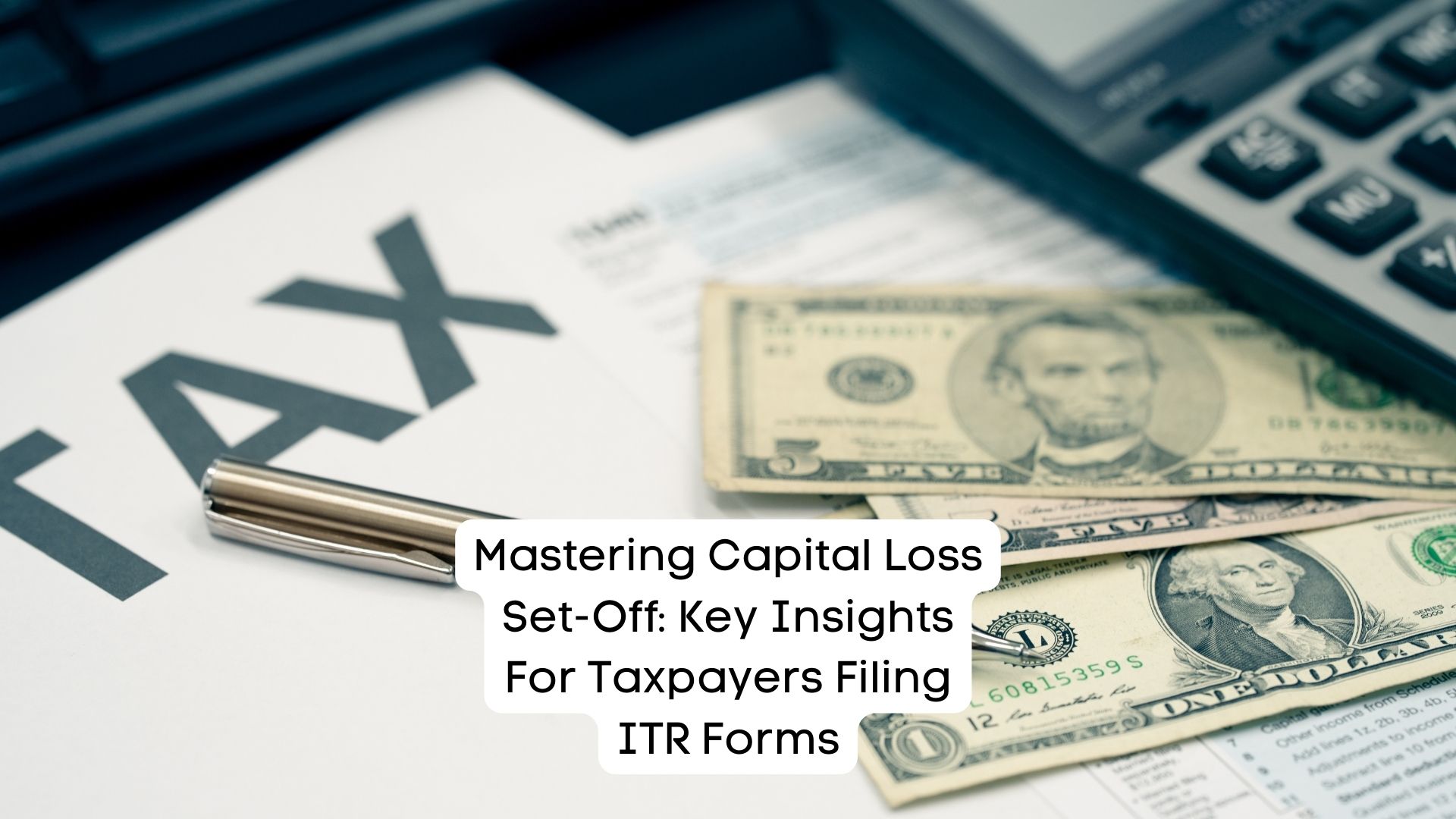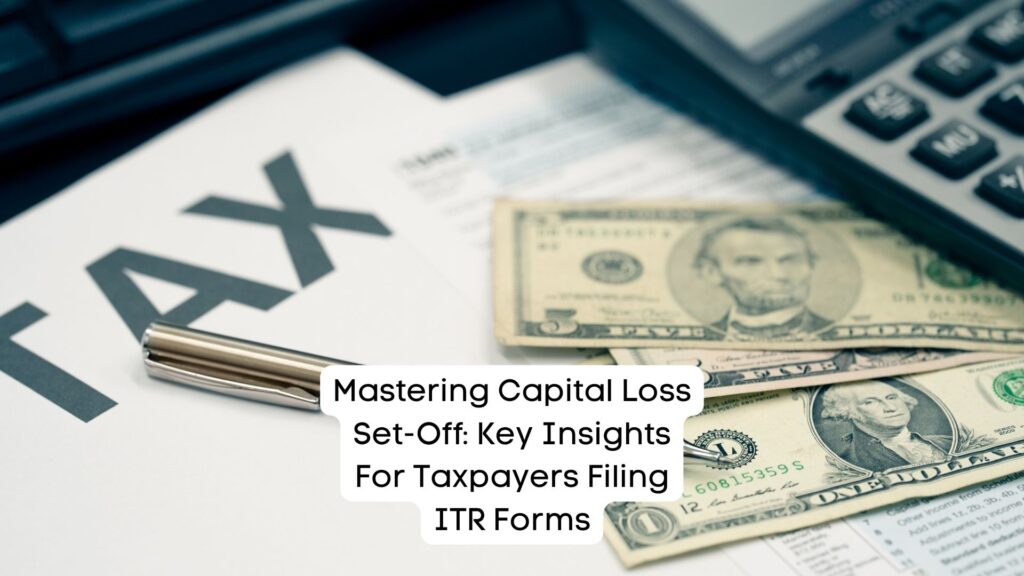
22 Feb Mastering Capital Loss Set-off: Key Insights for Taxpayers Filing ITR Forms

Loss, in its simplest form, signifies the excess of expenses over income. It emerges when the income earned by a taxpayer in a financial year is lesser than the expenditure. Losses can manifest in various forms such as house property loss, capital loss, loss from business or profession, or other income. In this detailed blog post, we will delve into the intricacies of setting off capital losses in Income Tax Return (ITR) forms.
Understanding Capital Losses:
A capital loss occurs when the value of a capital asset, such as investments or real estate, depreciates. This loss remains unrealized until the asset is sold for a price lower than its original purchase price. It is calculated as the difference between the purchase and selling prices of the asset, with the selling price being less than the purchase price.
For instance, if an individual purchases a house for Rs 25 lakh and sells it five years later for Rs 20 lakh, incurring a capital loss of Rs 5 lakh.
Mechanism of Capital Loss Set-off:
Under the provisions of the Income Tax Act, 1961, assets held by a taxpayer for investment purposes are treated as capital assets. These assets can include buildings, land, shares, securities, etc. If the selling price of a capital asset is higher than its purchase price, it results in a capital gain, whereas if the sale proceeds are lower than the acquisition cost, it leads to a capital loss.
Capital losses under the Income Tax Act are classified into:
Long-term Capital Loss
The Income Tax Act, 1961, specifies the following rules for setting off and carrying forward long-term capital losses:
- Long-term capital losses can only be set off against long-term capital gains.
- Any remaining capital loss can be carried forward to subsequent financial years.
- The carried forward loss can be set off for up to eight financial years. However, if the loss persists beyond eight years, it becomes unavoidable.
Short-term Capital Loss
For short-term capital losses, the following rules apply:
- Short-term capital losses can be set off against both long-term and short-term capital gains.
- Any unabsorbed loss can be carried forward to the next financial year.
- Similar to long-term losses, short-term losses can be carried forward for up to eight financial years. Beyond this period, the loss becomes unavoidable.
Capital Loss Set-off in ITR Forms
Section 70(2) and Section 70(3) of the Income Tax Act, 1961, govern the set-off of capital losses in ITR forms. They allow taxpayers to set off short-term capital losses against any capital gains and long-term capital losses against corresponding gains from other capital assets.
However, discrepancies may arise in the ITR forms’ arrangement, compelling taxpayers to set off losses against inappropriate gains, contrary to the Income Tax Act’s provisions.
Treatment of Long-term Losses on Shares and Equity Funds
If a taxpayer incurs a long-term capital loss from the sale of shares or equity mutual fund units after March 31, 2018, they can offset it against any long-term capital gains. Additionally, these losses can be carried forward for up to eight assessment years.
Filing of Income Tax Return
It is mandatory to file an Income Tax Return to carry forward losses for subsequent years. Even if the return shows no income, filing before the due date is necessary to avail of this benefit.
Conclusion
In conclusion, the Income Tax Act, 1961, provides provisions for setting off capital losses against capital gains, ensuring equitable treatment for taxpayers. However, proper adherence to these provisions in ITR forms is crucial to avoid discrepancies and ensure accurate tax computation.


No Comments